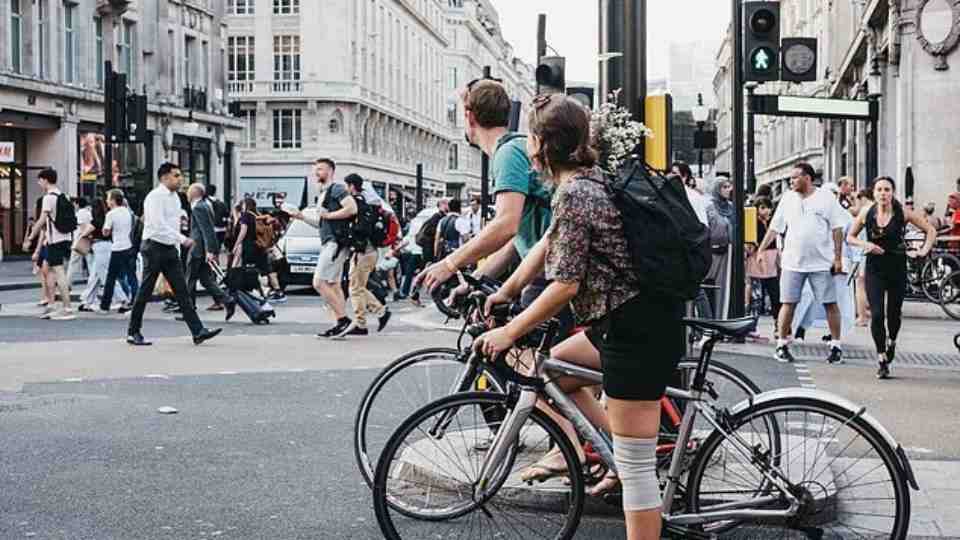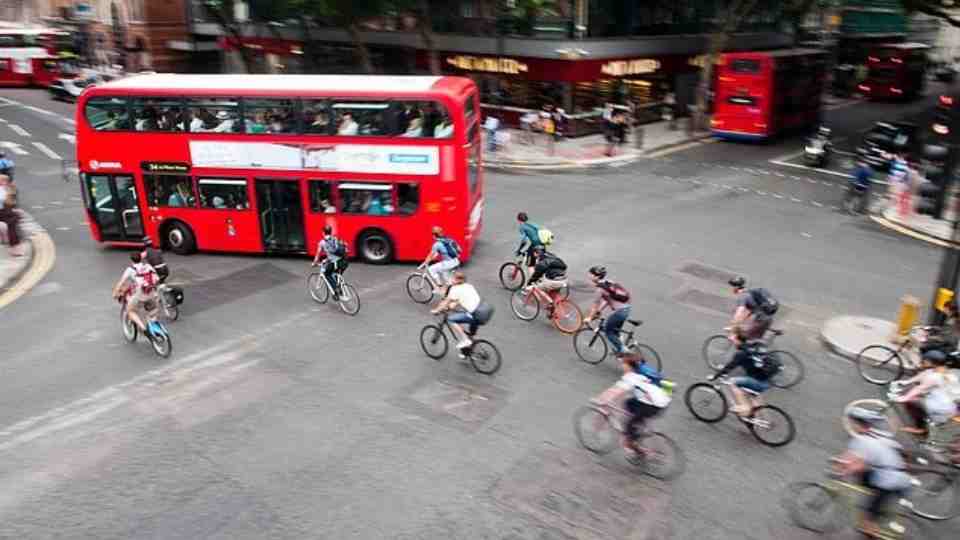LONDON CYCLISTS FACE STRICTER RED LIGHT PENALTIES AS ENFORCEMENT INTENSIFIES
Growing Crisis Demands Action
London’s cycling revolution has reached a crossroads. As more residents embrace two wheels to navigate Tube strikes and gridlocked traffic, a concerning pattern has emerged: widespread disregard for traffic laws that threatens pedestrian safety and undermines road order across the capital.
The City of London Police are now considering unprecedented enforcement measures that could see cyclist fines increase from the current £50 fixed penalty notices to substantially higher amounts through community protection warnings and notices. Officials describe the initiative as essential to tackle “dangerous, antisocial and nuisance cycling behaviours” that have become increasingly prevalent throughout London’s streets.
Alarming Statistics Reveal Scale of Problem
Recent data paints a stark picture of cycling compliance in the capital. More than 50 percent of London cyclists openly view red traffic lights as merely optional, according to a comprehensive BBC News study. This cavalier attitude toward traffic regulations has translated into enforcement statistics that underscore the severity of the situation.
In just the first six months of 2025, City of London Police have already issued fines to 284 cyclists for running red lights – a figure that represents more than ten times the number of motorists penalised for the same offence during the same period. Only 25 drivers received similar fines, highlighting the disproportionate nature of cyclist violations.
The enforcement figures become even more striking when viewed in broader context. ITV News cameras recently captured 200 cyclists running a single red light in just one hour, demonstrating the casual disregard many riders show toward basic traffic regulations.
Surge in Cycling Creates New Challenges
The enforcement crisis coincides with an unprecedented boom in London cycling. Recent industrial action saw a 75 percent increase in the use of rental bikes from companies like Lime and Forest, as commuters sought alternatives to disrupted public transport services. This surge has been so dramatic that some observers have compared London’s current cycling landscape to that of Hanoi, where traffic rules are largely ignored.
The rapid adoption of rental bikes and e-bikes has created additional complications. Many new cyclists lack familiarity with traffic laws, while the convenience of dockless bikes has led to problems with inconsiderate parking and dangerous riding behaviours.

Public Complaints Drive Policy Response
A comprehensive paper presented to the City of London Corporation’s Streets and Walkways Sub-Committee this week revealed the scope of public concerns. Complaints from residents and pedestrians focus primarily on three key areas: cyclists running red lights at busy junctions, e-bikes being operated dangerously, and bikes being ridden illegally on pavements and in pedestrianised areas.
Common Councillor Jacqueline Webster raised questions during the meeting about promoting a “culture of courteousness” among cyclists, reflecting growing frustration among residents who feel endangered by inconsiderate cycling behaviour.
Bruce McVean, the Corporation’s assistant director for policy and projects, acknowledged ongoing collaboration with e-bike rental companies and Transport for London (TfL) to address these issues. “Things are getting better, but there’s more work to be done,” he stated, indicating that current measures remain insufficient.
Enhanced Penalties Under Consideration
The proposed community protection warnings and notices would represent a significant escalation in enforcement capabilities. Unlike the current £50 fixed penalty notices, these new powers could allow authorities to impose substantially higher fines on repeat offenders or those engaged in particularly dangerous behaviour.
Currently, cyclists who contest their fines and are subsequently found guilty in court of more serious offences such as dangerous cycling face penalties of up to £1,000. The new enforcement tools would provide police with greater flexibility to impose intermediate sanctions without requiring court proceedings.
Mayor’s Awareness Campaign Highlights Knowledge Gap
Mayor of London Sir Sadiq Khan has launched a targeted campaign emphasising cyclist compliance with traffic laws. New TfL posters throughout the transport network carry a clear message: “Cyclists must always stop at red lights. Follow the rules.”
The campaign responds to concerning research revealing widespread ignorance of basic cycling regulations. A London-based survey found that only 16 percent of respondents could correctly identify five fundamental rules regarding cycling, including whether cyclists should stop at zebra crossings and red lights.
TfL has simultaneously launched an awareness campaign highlighting Highway Code requirements for both cyclists and pedestrians, recognising that education must accompany enforcement to achieve meaningful behaviour change.
Safety Statistics Support Intervention
Transport data demonstrates that cyclists and pedestrians face disproportionate risks on London roads compared to motorists, lending urgency to enforcement efforts. The combination of increasing cycling numbers and poor rule compliance creates a potentially dangerous situation that demands immediate attention.
The City of London Police’s “Safer City Streets” summer campaign represents part of a broader effort to address these safety concerns through increased visibility and enforcement. However, critics argue that education and infrastructure improvements must accompany punitive measures to achieve lasting change.
Looking Forward: Balancing Growth with Safety
London’s cycling boom represents a positive environmental and health development that officials are keen to encourage. However, the current enforcement crisis demonstrates that sustainable growth requires responsible behaviour from all road users.
The proposed enhanced penalties reflect authorities’ determination to ensure that London’s cycling revolution doesn’t come at the expense of pedestrian safety or traffic order. Whether these measures will succeed in changing cyclist behaviour remains to be seen, but the scale of current violations suggests that significant intervention is both necessary and overdue.
As London continues to evolve into a more cycle-friendly city, the coming months will prove crucial in determining whether authorities can successfully balance encouragement of sustainable transport with enforcement of essential safety regulations. The stakes are high: the safety of all road users depends on finding the right approach to this growing challenge.






